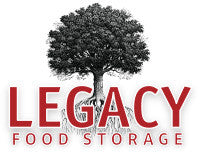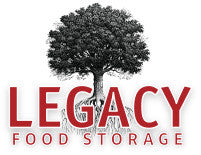
Ensuring Your Emergency Supplies Survive the Disaster
Nick and Susan always thought they were prepared for an emergency. They had built a well-stocked pantry, had long term food and water storage, a first-aid kit, and other supplies gathered to see them through a disruption. But when a faulty wire sparked a fire in the kitchen one night, they realized too late that they could not possibly grab all their carefully planned supplies in time. As they stood on the street watching firefighters battle the blaze, their emergency preparations quite literally went up in smoke.
This story is not uncommon. Many of us invest time, effort and resources into our emergency plans, only to overlook an important step; ensuring our supplies can survive the very disasters we're preparing for. This oversight can turn a well-intentioned plan into a costly lesson. Whether fire, flood, rodents, or even theft, with a little extra planning and a few adjustments, you can dramatically increase the chances you will not lose all your supplies.
The age-old adage "don't put all your eggs in one basket" applies perfectly here. While it's impossible to prepare for every conceivable scenario, taking some extra precautions can significantly increase the resilience of your emergency preparedness efforts.
- Diversify Storage Locations
- Home: Store supplies in multiple areas, including upper floors less likely to flood.
- Off-Site: Consider renting a storage unit or storing additional supplies at a trusted relative or friend's property.
- Car: Keep an emergency supply kit in your vehicle.
- Work: Maintain a kit at your workplace in case you're stranded during the day.
- Strengthen Protective Storage
- Use reinforced containers to protect against flooding and pests (waterproof ideal).
- Invest in fireproof safes for important documents and smaller high-value items.
- Install water sensors and sump pumps to protect against basement flooding.
- Explore options like long-term food storage that are more resilient to time.
- Create a cache of supplies in a waterproof container on your property away from your main residence.
- Create a Group Network
Form a local emergency group and build a network of trusted like-minded individuals to pool resources and skills. Spread out your risk by sharing storage space. This way, all is not lost if you're part of a group with shared resources.
- Prioritize Portability
Pack supplies in easy-to-grab bags or containers so you have many of your supplies ready to go. This allows for quick packing into vehicles and enables you to take more with you if you must evacuate. Also, practice evacuating with your gear to ensure you can manage it alone.
- Embrace Digital Solutions
- Store important documents and information in encrypted cloud storage.
- Use preparedness apps to track inventory and expiration dates.
- Keep digital copies of insurance policies and important contacts.
- Develop Skills & Knowledge
Learn skills like first aid, bartering, gardening, identifying edible plants, and how to improvise with limited resources. This knowledge remains accessible even if your physical supplies are lost or depleted. Skills can replace supplies.
- Regular Rotation and Inspection
Periodically check and rotate your supplies to ensure condition, temperature and stay on top of expiration dates. This habit familiarizes you with your inventory and storage locations while providing an opportunity to reassess and improve your storage strategy.
Remember, the goal isn't just to accumulate supplies, but to ensure they're available when you need them most. Alongside material preparedness, by spreading out your supplies, building community networks, and focusing on skills you'll be better equipped to face whatever challenges come your way.
Take some action: Look at your own emergency plan. Ask yourself, what can I do right now to ensure my preparations will survive when I need them most?
Tags
- All
- 25 year food
- 25 year shelf life food
- 72 hour kit
- Best food storage types
- Best long-term food storage
- Blizzard preparedness
- Budgeting
- canning
- Certified GMO-free Emergency foods
- Certified GMO-free foods
- Coffee
- Comparison of emergency food methods
- Composting tips
- Dangers of genetically modified foods
- dehydrated food
- Edible Wild Plants
- emergcy preparedness
- Emergency Cooking
- Emergency Food
- Emergency food Christmas gifts
- emergency food storage
- Emergency Food Supply
- Emergency food supply recommendations
- Emergency Planning
- Emergency Preparedness
- Emergency preparedness advice
- emergency preparednesss
- Emergency Supplies
- Emergency supplies checklist
- Emergency Survival
- emergency survival gear
- Emergency survival kit checklist
- Emergency Survival skills
- exercise
- Family emergency preparedness
- Family emergency preparedness plan
- Family Preparedness
- Food Storage
- Food storage 25 year shelf life
- Food storage amounts
- Food storage Christmas
- Food storage containers long term
- Food Storage Secrets
- Food storage serving size
- Food storage types compared
- freeze dried food
- Freeze dried food storage
- freeze dried meats
- Freeze-dried emergency food storage
- Fruit Trees
- Gardening
- Getting Started
- Gluten-free food Storage
- Gourmet emergency food
- Healthy food storage
- How much emergency food to store
- Improved emergency preparedness
- Jared Markin
- Jared Matkin
- Legacy Premium
- Lessons learned from Hurricane Sandy
- Lessons learned from natural disasters
- long-term food storage
- Long-term Food Storage Guidelines
- Long-term Food Storage tips
- Long-term water storage
- Mental Emergency Preparedness
- Mental toughness
- Money-saving tips
- Natural disaster planning
- Natural Disasters
- Perfect Christmas gifts
- Pet Emergency preparedness checklist
- Pet Emergency preparedness kit
- Pet Emergency Survival tips
- Pets and Emergency Preparedness
- Plant Foraging
- portable solar panels
- portable solar power
- portable water filters
- protein drinks
- Risk of genetic modification
- Seed saving and storage
- Seed saving guide
- Self-reliance
- Self-reliant practices
- Shelf Life
- Solar Cooking
- Solar Ovens
- Special Dietary needs
- Stranded in a car in a blizzard
- Survival food
- Survival Gear
- survival kit
- Survival kits
- Survival Ovens
- Survival Skills
- survivalist gear
- suvival kit
- Tree Pruning tips
- Tree Trimming basics
- unique ideas
- water bottle with filter
- water filter
- water filter straw
- water filters
- Water Filtration
- water pitcher with filter
- water pitchers with filters
- Water purification
- Wild Food Foraging
- Winter composting
- Winter driving
- Winter preparedness tips
- Winter storm preparedness tips
- Winter Survival







